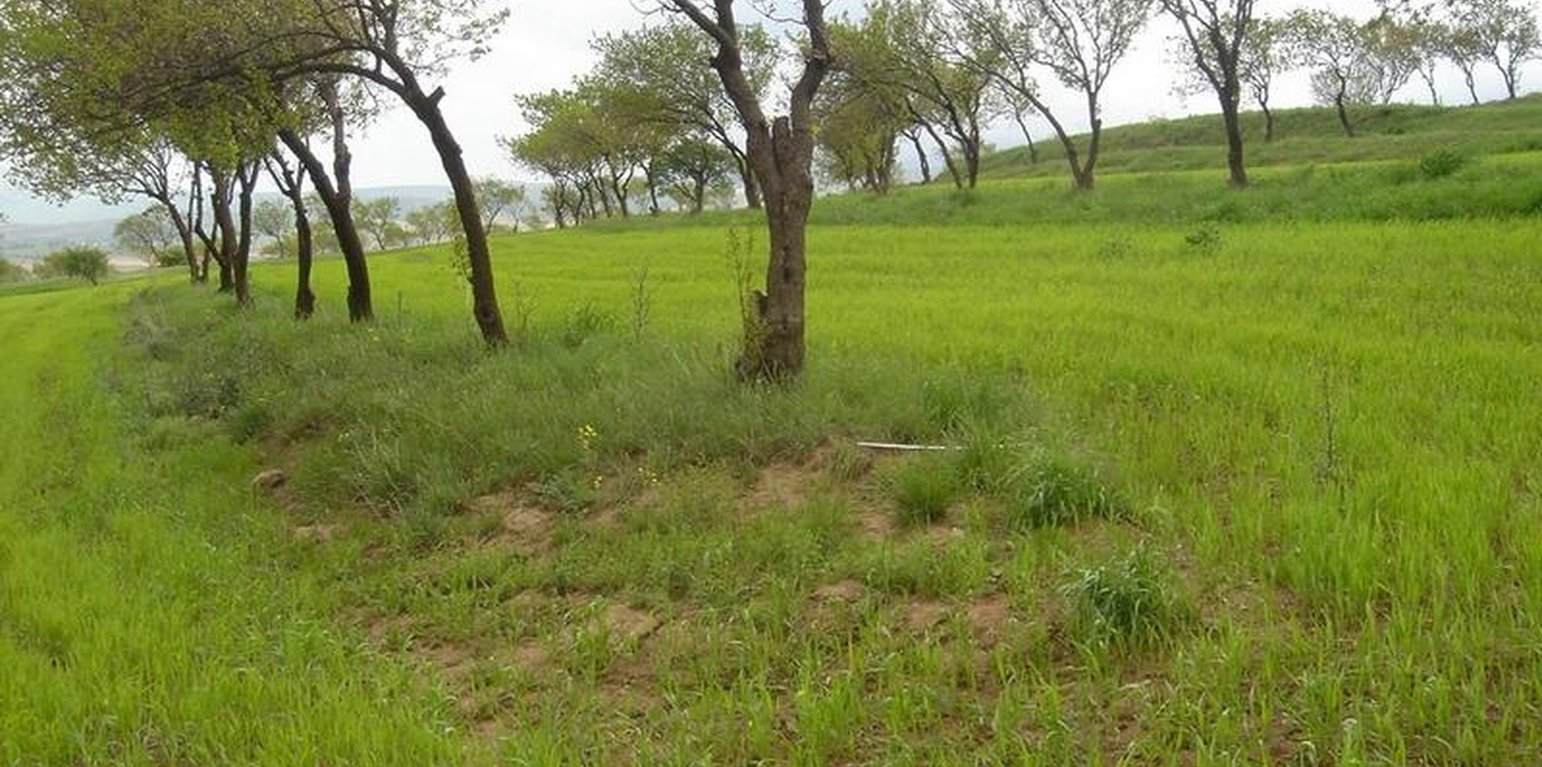



The technology involves intercropping wheat in an existing apricot orchard, that was established during soviet times to increase farm production, by integrating different resources in an environment protected from soil erosion. The intercropped area is ploughed by tractor. In general, farmers do not practice crop rotation since they usually allocate cereal production to the most fertile field plots of their farm.
Along the trees aligned on contour, a three metre wide grass strip is left uncultivated to control runoff, and to protect the ground from splash erosion. Spacing between rows is 13 metres, which allows unhindered farm operations.
Most orchards in Faizabad Rayon were established during Soviet times. Tree rows were planted close together in order to obtain maximum yields from the orchard monoculture systems. Some of the tree rows were removed, allowing more space for intercropping.
Purpose of the Technology: The technology is applied in existing orchards which generally range between 10-25% in gradient. In existing orchards, intercropping alone is relatively cost intensive. Harvesting two crops at a time increases overall farm production and improves food security since harvests of intercropped food crops are found to be more reliable than those on exposed annual cropland. However, many orchards are still owned by state farms which usually do not practice intercropping. Since management of fruit trees require considerable labour and material inputs (e.g. chemicals for pest/disease control as well as fertilisers) which often cannot be met by farmers, yields of fruit trees have declined after the privatisation of these areas. Furthermore, farmers often lack knowledge of appropriate orchard management techniques and miss opportunities to gradually replace old trees by new seedlings.
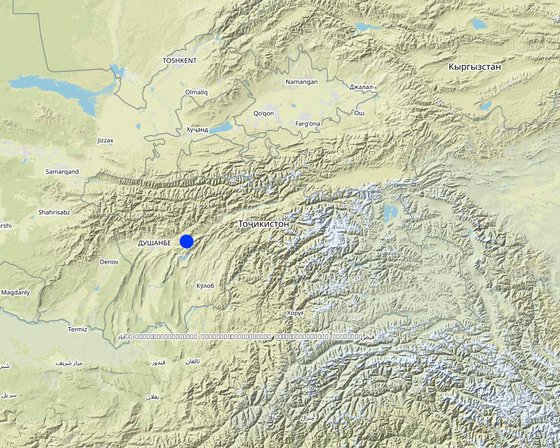
地点: Faizabad Rayon, Tajikistan, 塔吉克斯坦
分析的技术场所数量:
技术传播: 均匀地分布在一个区域 (approx. 1-10 平方千米)
在永久保护区?:
实施日期:
介绍类型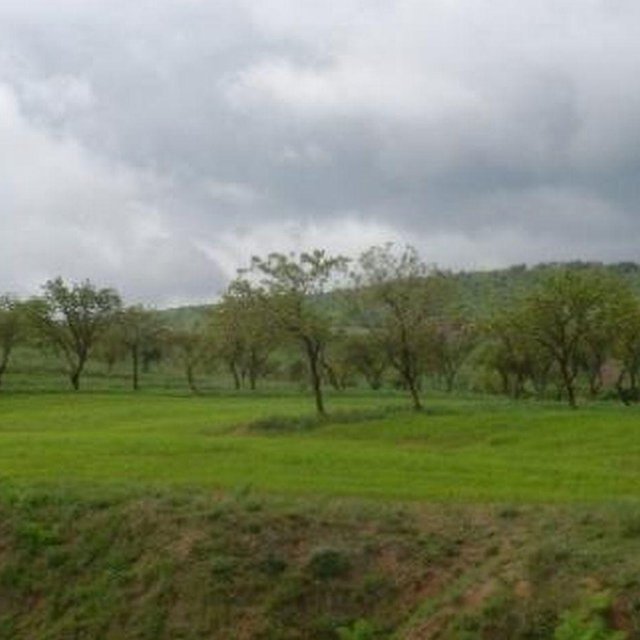
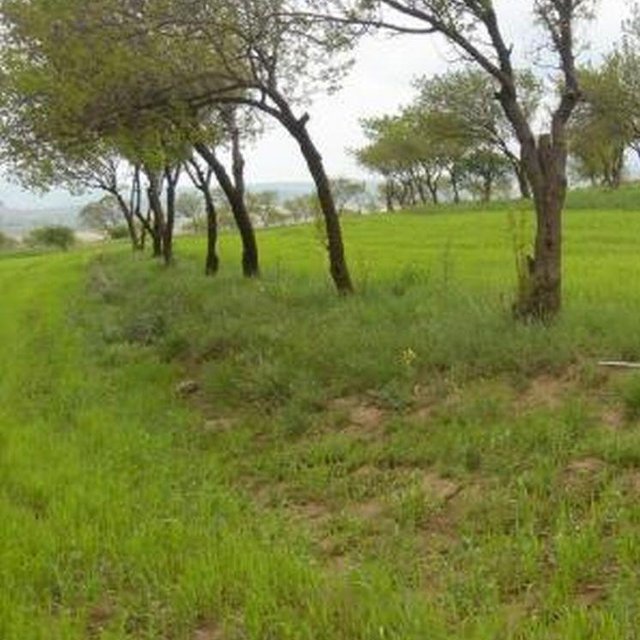






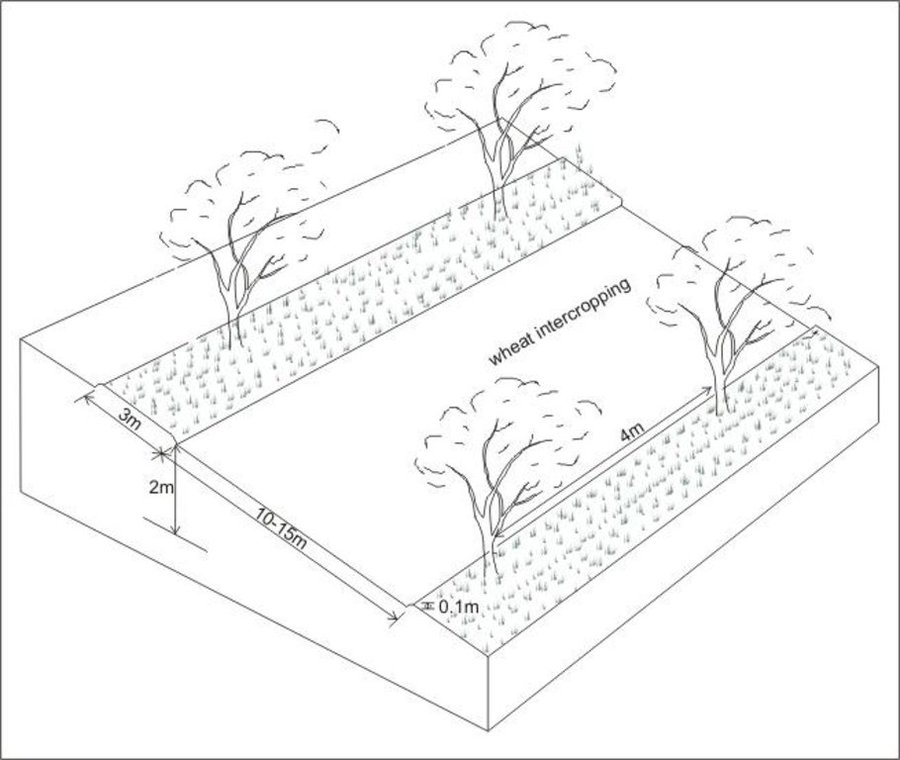
| 对投入进行具体说明 | 单位 | 数量 | 单位成本 (美元) | 每项投入的总成本 (美元) | 土地使用者承担的成本% |
| 劳动力 | |||||
| thinning and clearing of tree rows | ha | 1.0 | 6.0 | 6.0 | 100.0 |
| 设备 | |||||
| tools | ha | 1.0 | 25.0 | 25.0 | 100.0 |
| 技术建立所需总成本 | 31.0 | ||||
| 技术建立总成本,美元 | 31.0 | ||||
| 对投入进行具体说明 | 单位 | 数量 | 单位成本 (美元) | 每项投入的总成本 (美元) | 土地使用者承担的成本% |
| 劳动力 | |||||
| sowing and weeding | ha | 1.0 | 18.0 | 18.0 | 100.0 |
| pruning of fruit trees | ha | 1.0 | 45.0 | 45.0 | 100.0 |
| cutting of twiggs affe | ha | 1.0 | 15.0 | 15.0 | 100.0 |
| 设备 | |||||
| machine use | ha | 1.0 | 20.0 | 20.0 | 100.0 |
| 植物材料 | |||||
| seeds | ha | 1.0 | 30.0 | 30.0 | 100.0 |
| 肥料和杀菌剂 | |||||
| fertilizer | ha | 1.0 | 50.0 | 50.0 | 100.0 |
| compost/manure | ha | 1.0 | 40.0 | 40.0 | 100.0 |
| 技术维护所需总成本 | 218.0 | ||||
| 技术维护总成本,美元 | 218.0 | ||||
due to intercropping, management of trees gets more difficult
intercropped wheat requires additional inputs to an already input intensive orchard system
due to lack of fertilisers and pesticides
due to inappropriate pruning